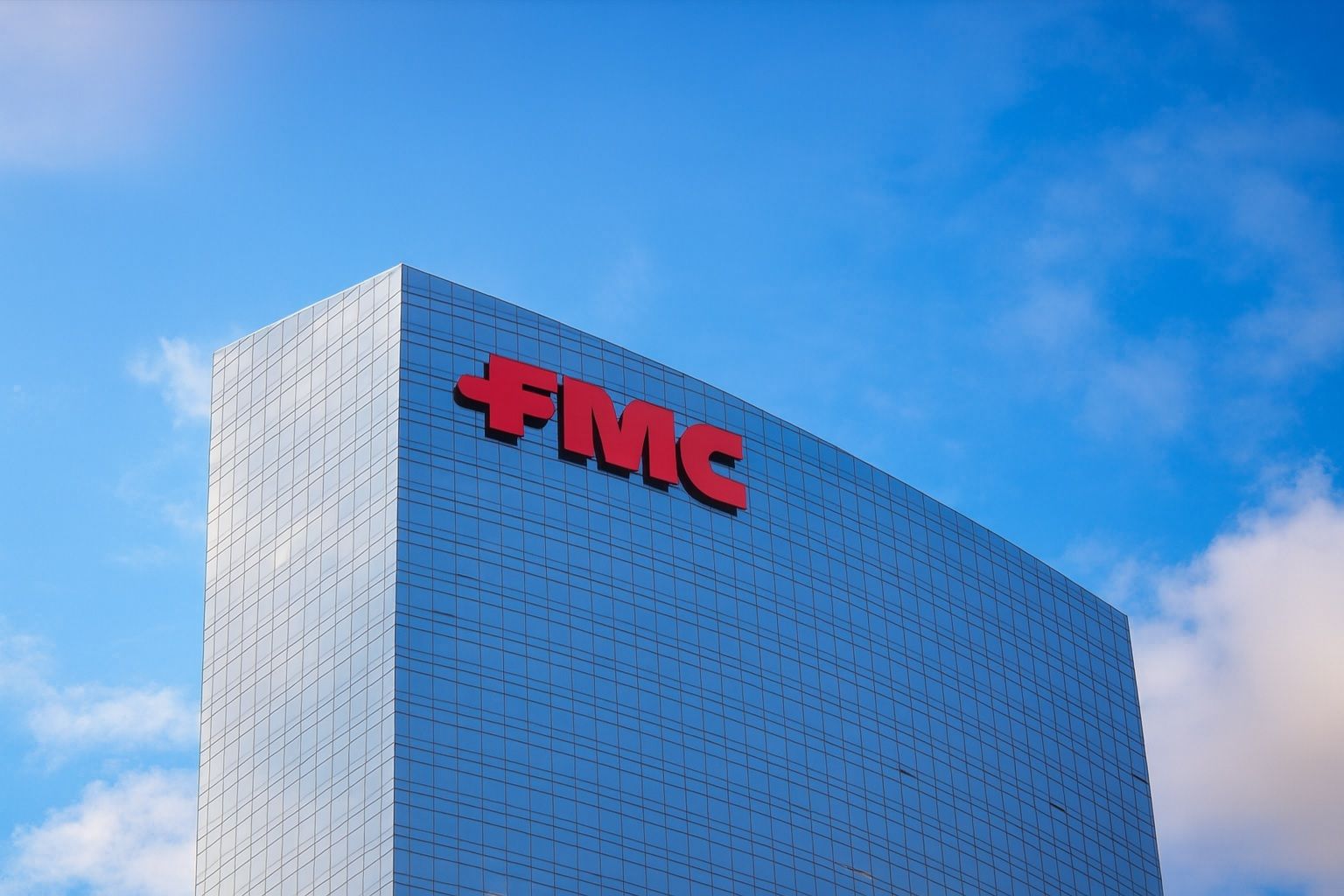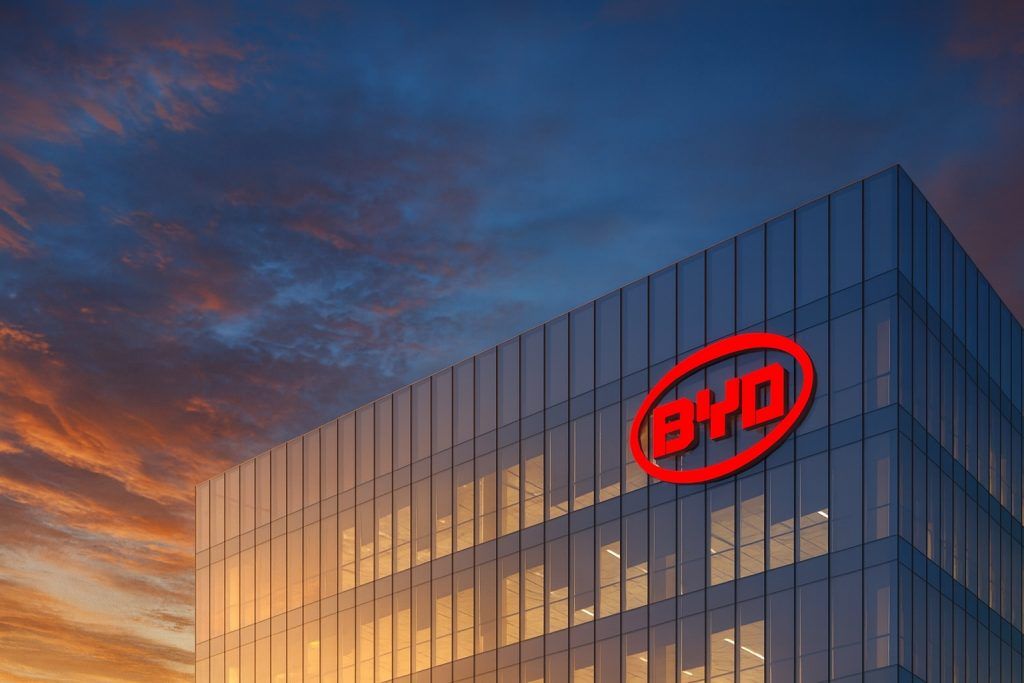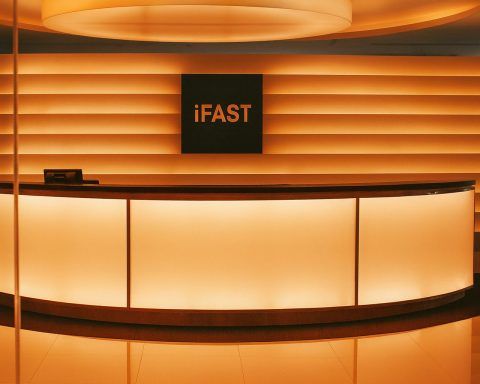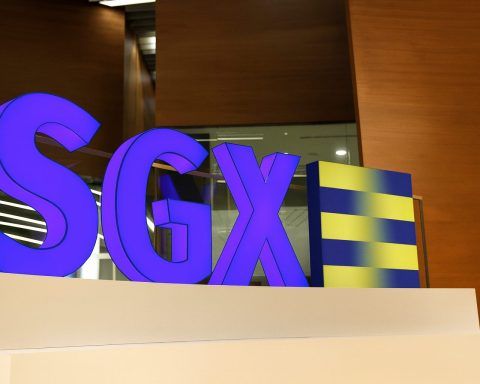- Earnings calamity: FMC Corp’s shares crashed about 42% in one day to around $16, marking their lowest level since 2016, after the agricultural chemicals firm reported a $569 million quarterly loss and slashed its dividend [1] [2]. The stock had already fallen ~40% year-to-date and traded near $29 (52-week low) before this plunge [3].
- India write-down hits hard: Third-quarter revenue plunged 49% year-over-year to $542 million, and FMC swung to a steep net loss of $569.3 million (vs. a $65 million profit a year ago) due to charges tied to its India business sale [4] [5]. FMC revealed a $510 million write-down on its India unit – previously valued near $960 million – now marked down to ~$450 million, alongside related inventory returns and pricing adjustments [6]. Excluding India, core revenue still slipped ~4% amid pricing pressure from generic competitors in Latin America and Asia [7].
- Guidance cut sharply: FMC lowered its outlook across the board. Full-year 2024 revenue guidance was trimmed about 7% to $3.92–$4.02 billion (with EBITDA now seen at $830–$870 million) and free cash flow projected around breakeven or worse [8] [9]. For the upcoming quarter, FMC now expects Q4 revenue of $1.12–$1.22 billion, well below analysts’ ~$1.29 billion consensus, signaling continued challenges ahead [10].
- Dividend slashed & leadership shakeup: To conserve cash, FMC’s board cut the quarterly dividend by 80% – from $0.50 last quarter to just $0.08 per share. Chairman and CEO Pierre Brondeau said the move was needed “to further prioritize cash generation and debt reduction” [11]. The company also announced President Ronaldo Pereira will step down effective December 15 as part of a mutual agreement amid ongoing restructuring [12].
- Market panic and multi-year low: Investors reacted swiftly to the bad news. FMC’s stock plummeted 26% overnight after earnings and then extended losses to over 40% during Thursday trading, opening around $21 but free-falling to close at $16.34 by day’s end [13] [14]. This wipeout erased over a third of FMC’s market value in one session. (For context, even other sectors are seeing similar jitters – e.g. Deckers Brands’ stock slid ~12% in a single day after issuing a weak outlook despite strong earnings [15], underscoring how skittish investors are about forward guidance.)
- Analysts react – downgrades and cuts: Wall Street quickly tempered its view on FMC. Fermium Research downgraded the stock from Buy to Hold (price target $28), and UBS cut its target from $44 to $36, citing the weaker outlook [16]. Royal Bank of Canada likewise slashed its target from $42 to $33 while maintaining a neutral “Sector Perform” rating [17]. Multiple firms have trimmed estimates – consensus analyst recommendation is now Hold – reflecting limited near-term confidence.
- Is there value at the bottom? With shares in freefall, FMC’s valuation multiples have compressed. The stock now trades around 0.9× sales, near historic lows [18], and its forward price-to-earnings has dropped into the high single digits [19]. The average analyst price target remains roughly $40–$45 (pre-crash) [20], implying substantial upside if FMC can stabilize. Some investors even see recovery potential from these distressed levels – but only if the company succeeds in cutting debt and refocusing on higher-margin products to restore growth [21].
Earnings Shock: Huge Loss on India Exit and Plunging Sales
FMC Corporation stunned the market with a far worse-than-expected third quarter, driven by a massive one-time hit in its international operations. The Philadelphia-based crop protection company reported a GAAP net loss of $569.3 million for Q3 2025, a dramatic swing from a $65 million profit in the same quarter last year [22]. The red ink stems largely from FMC’s troubled India business, which the firm is preparing to divest. FMC took a $510 million write-down on the India unit’s value and associated assets, writing its carrying value down from about $960 million to $450 million [23]. In addition, FMC recorded pre-sale adjustments of roughly $282 million, including product return costs and pricing concessions designed to accelerate collections in India [24]. These charges pushed FMC deep into the red and underscore the severity of the issues in that market.
Even apart from the India debacle, FMC’s core business showed strain. Revenue collapsed 49% year-over-year to just $542 million for the quarter [25]. The company attributed the plunge primarily to those one-time India actions (essentially wiping out about half of sales). However, excluding India, sales still fell ~4% on a like-for-like basis [26], indicating broader softness. FMC noted pricing pressure as a key factor – overall prices were down ~6%, partly due to cost-linked contract adjustments with partners, and partly due to increased generic competition eroding its market share in Latin America and Asia [27]. In short, FMC faced a perfect storm of weak demand and competitive pressure on top of the India segment write-off.
On the earnings front, there was one silver lining: FMC’s adjusted profit held up better than expected. Stripping out the special charges, adjusted EPS came in at $0.89, which actually beat analyst forecasts and was up ~30% from a year ago [28]. This upside surprise was achieved by aggressive cost-cutting and a boost from new product launches – management highlighted that new product revenues nearly doubled, helping offset declines elsewhere [29]. Adjusted EBITDA of $236 million also modestly exceeded expectations [30]. These figures suggest FMC’s underlying operations are still profitable on an adjusted basis, but the market’s focus remains on the top-line collapse and what it portends for the future.
Slashing Guidance and Dividend to Tackle the Downturn
Facing these setbacks, FMC’s leadership moved quickly to reset expectations and shore up the balance sheet. The company cut its forward guidance substantially. It reduced its full-year 2024 revenue forecast by ~7%, now expecting $3.92–$4.02 billion in sales (versus ~$4.2 billion previously) [31]. Likewise, FMC trimmed its adjusted EBITDA outlook by about 6% to $830–$870 million [32]. Perhaps most striking, FMC slashed its free cash flow projection to near zero – guiding for $0 to -$200 million of free cash flow, down from a prior positive range [33]. This implies the firm might not generate any excess cash this year, a worrying sign that prompted decisive action on shareholder returns.
Indeed, FMC’s board approved an 80% reduction in the quarterly dividend, a drastic but not unexpected measure given the cash crunch. The payout will drop from $0.44 last quarter (and $0.50 earlier in the year) to just $0.08 per share going forward [34]. CEO Pierre Brondeau acknowledged the difficult step, stating “to further prioritize cash generation and debt reduction, the FMC Board… has made the decision to reduce the dividend” [35]. Cutting the dividend will conserve cash that FMC desperately needs to pay down debt and stabilize its finances amid declining revenues. The firm’s net debt had risen as sales slowed, and with interest rates high, management appears intent on strengthening the balance sheet even at the expense of upsetting income-focused investors.
FMC also issued a sobering outlook for the next quarter. The company projects Q4 2025 revenue of $1.12–$1.22 billion, which is well below Wall Street’s ~$1.29 billion consensus prior to the announcement [36]. In other words, FMC expects the sales slump to continue into year-end, coming in roughly 5–13% under analysts’ forecasts. Executives cited ongoing inventory destocking by customers and competitive pressures as reasons for the weaker forecast. This cautious guidance underscores that FMC’s challenges are not a one-quarter blip but could persist into 2026.
Amid the upheaval, there was also a leadership change unveiled alongside earnings. FMC announced that President Ronaldo Pereira will step down from his role effective December 15 [37]. The decision was described as a mutual agreement between Pereira and CEO Brondeau as part of a management restructuring. Pereira, who had served as president since 2020, will remain in an advisory capacity until mid-December to ensure a smooth transition [38]. While the company did not explicitly tie this leadership change to the recent performance, it comes as FMC is undertaking broad restructuring efforts. The departure of a top executive suggests a sense of urgency to chart a new course amid the firm’s steep challenges.
Stock Craters to Lowest in Years as Investors Flee
The market’s verdict on FMC’s news was swift and severe. Investors dumped the stock en masse, sending FMC shares into a tailspin. In Wednesday’s after-hours trading immediately following the earnings release, FMC’s stock plunged about 26% to roughly $21 per share [39]. But the rout didn’t end there: once investors had a night to digest the gloomy outlook, even more selling ensued when markets opened on Thursday. FMC opened around $21.88 on Thursday but quickly nosedived, and by the closing bell the stock had collapsed all the way to $16.34 [40]. That represents a single-day drop of roughly 43% from the previous day’s close – a staggering wipeout of market value. It also pushed FMC shares down to their lowest price in at least nine years, well below the prior 52-week low of ~$28 [41].
Such a precipitous decline is highly unusual for an established mid-cap company, and it made FMC the biggest loser on the NYSE for the day. The sell-off reflects investors’ shaken confidence in FMC’s near-term prospects and balance sheet health. A $16 share price values FMC at only about $2.0 billion in market capitalization, a far cry from the ~$4–5 billion value it held just weeks ago. Trading volume was extremely heavy as well, indicating that many institutional holders were rushing for the exits.
It’s worth noting that the broader stock market has been unforgiving toward companies delivering bad news this earnings season. Investors are intensely focused on guidance and cash flow, and any hint of trouble is met with outsized punishment. FMC’s 40%-plus plunge is extreme, but not entirely isolated – for example, Deckers Brands (a footwear retailer) saw its stock tank ~12% in one day last week after issuing a tepid outlook, despite posting solid earnings growth [42]. This illustrates how skittish the market is about future demand across industries. In FMC’s case, the combination of a demand downturn, a major write-down, and a dividend cut created a perfect storm of negativity that virtually vaporized its stock price overnight.
Heading into this report, FMC’s stock had already been trending downward for months. The shares were down about 40% year-to-date and off more than 50% from their 2024 highs [43], as the agricultural chemicals sector struggled with oversupply and lower prices. The latest crash brings the 12-month loss to over -54% [44] for FMC’s shareholders, a brutal slide that has wiped out years of gains. Long-term investors are now questioning where the bottom might be, while bargain hunters are cautiously examining whether the beaten-down stock could rebound once the dust settles.
Analyst Reactions: Downgrades Pour In, but Hopes for Rebound Remain
In the wake of FMC’s dismal results, Wall Street analysts scrambled to adjust their ratings and price targets. The overall tone was one of cautious realism, as even previously bullish analysts conceded that the near-term outlook is weak. Royal Bank of Canada (RBC) quickly lowered its price target from $42 to $33, maintaining a neutral Sector Perform stance [45]. RBC’s new target still implies the stock could recover to the low-$30s (roughly double the latest price), but the cut acknowledges that prior expectations were far too optimistic. UBS analyst Joshua Spector likewise slashed his target to $36 (from $44) and kept a Neutral rating [46], citing the earnings miss and guidance cut. Smaller shop Fermium Research went further, downgrading FMC to Hold from Buy and indicating a wait-and-see approach with a target around $28 [47]. Meanwhile, Citigroup had already trimmed its target to $34 earlier in October [48] amid industry headwinds, and other brokers are expected to update their models in the coming days.
Despite these downgrades, it’s notable that most analysts are not outright bearish – the consensus rating remains “Hold”, with a few still urging Buy on a long-term basis [49]. According to MarketBeat, as of mid-October the stock had 5 Buy, 8 Hold, and 1 Sell ratings, and an average price target around $43 [50]. Of course, those figures haven’t yet fully accounted for this latest quarter; we will likely see some target averages come down. But they highlight that many analysts see FMC’s issues as fixable over time, if management can execute a turnaround. In fact, some experts argue the market overreacted by cutting the stock nearly in half, given that FMC still has a sizable agricultural chemicals franchise and valuable proprietary products.
From a valuation perspective, FMC’s crash has made the stock look historically cheap by some measures. Finimize notes the company’s price-to-earnings ratio (forward basis) has plunged to roughly 8×, down from ~11× just last quarter [51]. Its price-to-sales ratio is now about 0.9, near record lows [52] for the company, indicating the stock is valued at under 1 times annual revenue. These depressed multiples suggest that a lot of bad news is already priced in. If FMC can stabilize earnings next year, the stock could be undervalued at these levels. In fact, the median analyst price target is still about 26% higher than the pre-plunge share price, reflecting an expectation of some rebound [53]. At $16, the upside to even a $30 target would be significant.
However, skepticism remains warranted. FMC’s financial health metrics have deteriorated – its debt-to-equity stands near 0.95 (quite leveraged) and its Altman Z-score of ~1.7 places it in a potential distress zone [54]. The dividend cut and cash flow issues raise questions about liquidity if market conditions don’t improve. Analysts want to see evidence that FMC can stop the bleeding in sales and reduce its debt load in coming quarters. Until then, few are recommending aggressive buying, even if the valuation looks tempting. As one trading expert quipped, “I focus on what a stock is doing, not what I want it to do. Let the stock prove itself before you make a move,” cautions Tim Bohen of StocksToTrade [55]. In other words, FMC will have to earn back the market’s trust through concrete improvements.
Outlook: Industry Headwinds and the Path Forward
FMC’s turmoil is unfolding against a challenging backdrop for the entire crop protection and agricultural chemicals industry. Around the globe, farm input demand has been soft this year, and customers have been working down their inventory levels. FMC’s management noted that distributors in many countries are holding significantly less inventory than normal, which hurt sales – a trend echoed by peers. Pricing pressure is intense as well: a flood of generic pesticide products, especially from emerging markets, has driven down prices for key crop chemicals [56]. This industry-wide oversupply and competition have forced major players to discount products to defend market share. Commodity price fluctuations (like lower crop prices) can also reduce farmers’ spending on inputs, adding another headwind for companies like FMC.
In response, FMC and its rivals are recalibrating strategies. FMC has emphasized cost cuts, divestitures of non-core assets (hence the India sale), and investments in new product innovation to differentiate its portfolio [57]. Notably, FMC is one of the top five patented crop protection firms, with a pipeline of new active ingredients and biological crop protection solutions in development [58]. The firm’s bet is that focusing on higher-margin, proprietary products will drive a turnaround once market conditions normalize. FMC’s recent woes have also accelerated discussions about operational efficiency – for instance, the company indicated it’s shifting production to lower-cost manufacturing sites to improve margins longer term [59].
Looking ahead, executing a turnaround will take time. The next few quarters may continue to be bumpy. Investors will be watching whether FMC can meet its lowered Q4 guidance (the bar is now set lower at ~$1.2 billion in revenue) or if further misses are in store. Any signs of stabilization in Latin America and Asia, or progress on the India business sale, would be positive. Moreover, management’s commitment to debt reduction and cash conservation will be scrutinized – hitting their now-reduced free cash flow target (even if zero) would at least indicate things aren’t worsening further. The macroeconomic environment for agriculture will also play a huge role: an improvement in crop prices or farm economics in 2026 could boost demand for FMC’s products, whereas continued weak conditions would make recovery tougher.
For now, market sentiment remains fragile. The company’s stock is firmly in the penalty box until proven otherwise. Still, history shows that such beaten-down stocks can eventually bounce if the underlying business finds its footing. FMC’s situation resembles past slumps at other chemical companies that later recovered when supply-demand dynamics turned more favorable. As FMC works through its inventory gluts and portfolio adjustments, a return to modest growth and profitability is possible down the line – but investors will demand clear evidence of a turnaround. Until then, caution reigns.
In the words of one analyst, “FMC’s story is now all about rebuilding credibility. They’ve taken drastic steps like the dividend cut; next they need to show those actions pay off in improved financials.” The coming year will be critical for FMC to demonstrate that this quarter’s debacle was an inflection point rather than a new normal. For battered shareholders and curious bargain hunters alike, FMC’s next moves – from deleveraging to driving innovation – will determine whether this stock can escape the deep hole it’s fallen into.
Sources: FMC Corp Q3 2025 earnings report (Benzinga) [60] [61]; GuruFocus financial update [62] [63]; Finimize analysis [64] [65]; MarketBeat analyst coverage [66]; StocksToTrade market commentary [67] [68]; ts2.tech news on peer stock reactions [69].
References
1. www.benzinga.com, 2. stockstotrade.com, 3. www.benzinga.com, 4. www.benzinga.com, 5. www.benzinga.com, 6. www.benzinga.com, 7. www.benzinga.com, 8. www.benzinga.com, 9. www.benzinga.com, 10. www.gurufocus.com, 11. www.benzinga.com, 12. www.benzinga.com, 13. www.benzinga.com, 14. stockstotrade.com, 15. ts2.tech, 16. stockstotrade.com, 17. www.marketbeat.com, 18. www.gurufocus.com, 19. finimize.com, 20. www.gurufocus.com, 21. finimize.com, 22. www.benzinga.com, 23. www.benzinga.com, 24. www.benzinga.com, 25. www.benzinga.com, 26. www.benzinga.com, 27. www.benzinga.com, 28. finimize.com, 29. finimize.com, 30. finimize.com, 31. www.benzinga.com, 32. www.benzinga.com, 33. www.benzinga.com, 34. www.benzinga.com, 35. www.benzinga.com, 36. www.gurufocus.com, 37. www.benzinga.com, 38. www.benzinga.com, 39. www.benzinga.com, 40. stockstotrade.com, 41. www.benzinga.com, 42. ts2.tech, 43. www.benzinga.com, 44. simplywall.st, 45. www.marketbeat.com, 46. stockstotrade.com, 47. stockstotrade.com, 48. www.marketbeat.com, 49. www.marketbeat.com, 50. www.marketbeat.com, 51. finimize.com, 52. www.gurufocus.com, 53. finimize.com, 54. www.gurufocus.com, 55. stockstotrade.com, 56. finimize.com, 57. finimize.com, 58. www.gurufocus.com, 59. www.benzinga.com, 60. www.benzinga.com, 61. www.benzinga.com, 62. www.gurufocus.com, 63. www.gurufocus.com, 64. finimize.com, 65. finimize.com, 66. www.marketbeat.com, 67. stockstotrade.com, 68. stockstotrade.com, 69. ts2.tech









